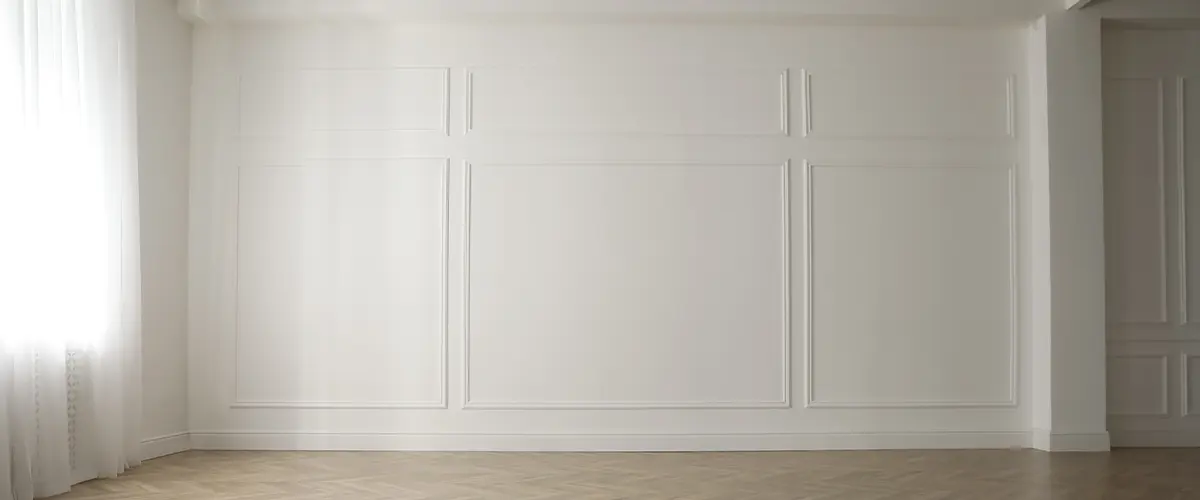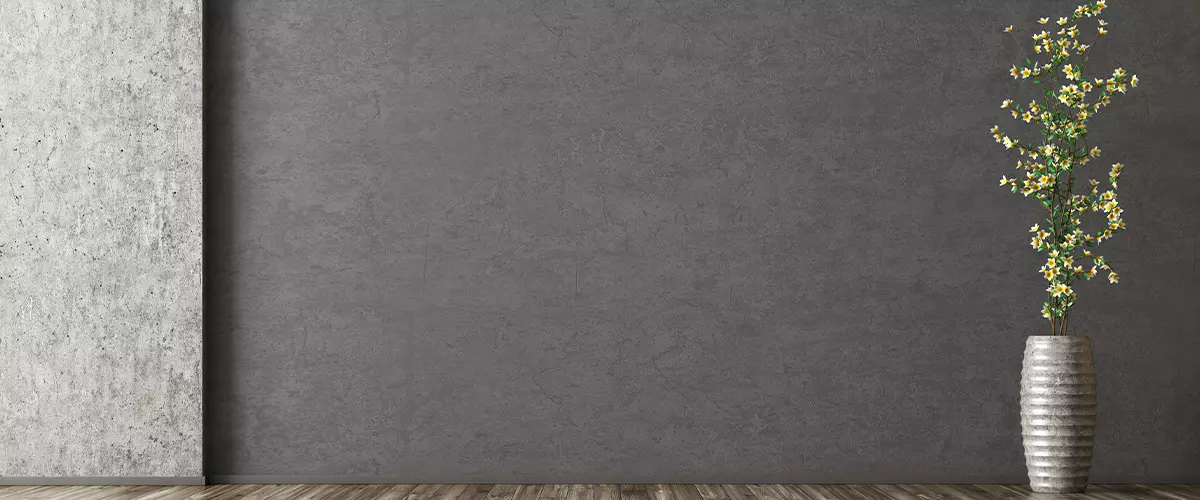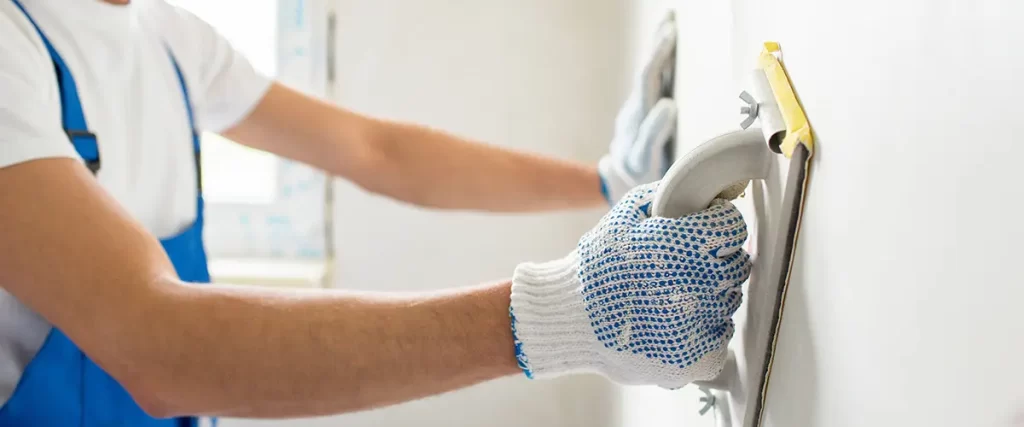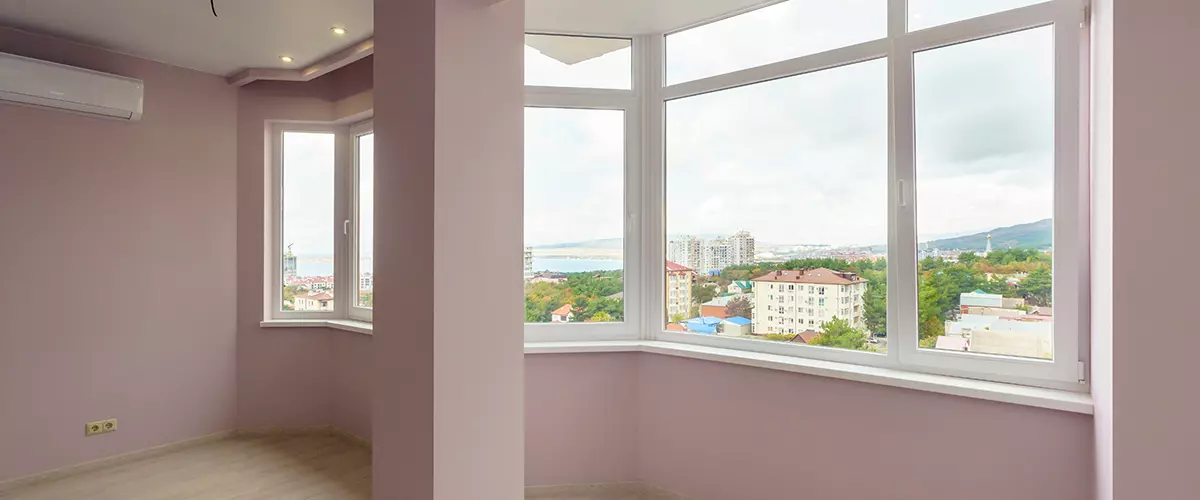Decorating your home can be a fulfilling experience, but do you know the best conditions for interior painting?
Research has shown that both temperature and humidity play crucial roles in how well paint adheres to walls.
This blog will guide you through the optimal weather conditions and practical tips for achieving a flawless paint job within your home. Intrigued? Keep reading to unlock the secrets of effective interior painting.

Key Takeaways
- The recommended temperature range for interior painting is between 50 to 85 degrees Fahrenheit.
- Extreme temperatures can affect the drying process and adhesion of the paint.
- High humidity levels can cause longer drying times and potential paint failure.
- Proper ventilation is essential for interior painting projects to ensure healthy air circulation and optimal drying conditions.
Ideal Temperature and Humidity for Interior Painting
The recommended temperature range for interior painting is generally between 50 to 85 degrees Fahrenheit. Extreme temperatures can affect the drying process and adhesion of the paint, while high humidity levels can cause issues such as longer drying times and potential paint failure.
Recommended Temperature Range
Latex paint is best used when temperatures range between 50-85 degrees Fahrenheit. When you apply it within this temperature range, the paint adheres strongly to surfaces and dries uniformly.
Extremely cold or hot weather can cause significant issues such as slow drying times or irregular texture. Similarly, oil-based paints should be applied at temperatures between 40-90 degrees Fahrenheit for optimal results.
Consulting a professional painter can help determine the most suitable type of paint and temperature conditions for your interior painting project.
Effects Of Extreme Temperatures
Extreme temperatures can potentially disrupt a painting project. In extreme heat, paint dries too quickly, which might lead to brush marks or clumps on your wall. This is because the water in water-based paints evaporates swiftly, and oil in oil-based paints gets thicker.
Conversely, cold weather prolongs the drying time of both latex and oil paints. The paint may not adhere properly to the surface if the temperature drops significantly during the application, leading to cracking or peeling over time.
Therefore, it’s crucial for homeowners to consider the effects of extreme temperatures while planning for interior painting projects.
Effects Of High Humidity
High humidity often complicates interior painting projects. The increased moisture content in the air leads to slower drying times as the excess water interferes with the paint’s ability to dry properly and quickly.
Interior surfaces become damp, preventing new paint from adhering well to these wet walls.
Moreover, high indoor temperatures coupled with elevated humidity levels can result in a streaky or uneven finish. It can also cause fresh coats of paint to bubble or blister shortly after application, tarnishing your hard work.
Therefore, controlling humidity levels during any interior painting project ensures smoother paint jobs and a more pleasing end result for homeowners.

Best Practices for Interior Painting in Different Seasons
In winter, it’s important to choose a time when the temperature is above freezing and to paint during daylight hours to allow the paint to dry properly.
Winter Painting Tips
Painting during the winter months can pose some challenges due to lower temperatures and higher humidity levels. Here are some tips to ensure a successful interior painting project during the colder seasons:
Choose the right paint: Opt for water-based paints instead of oil-based paints as they tend to dry faster in cold weather.
Check the temperature: Make sure the room temperature is within the ideal range of 50-85°F (10-29°C) for proper paint drying.
Choose the right paint: Opt for water-based paints instead of oil-based paints as they tend to dry faster in cold weather.
Check the temperature: Make sure the room temperature is within the ideal range of 50-85°F (10-29°C) for proper paint drying.
Summer Painting Tips
Fall Painting Tips
Spring Painting Tips
Spring is a popular season for interior painting projects. Here are some tips to help you achieve the best results:

Factors to Consider for Interior Painting
Proper ventilation is essential for interior painting to ensure that the paint fumes dissipate and fresh air circulates in the room. Avoiding direct sunlight during painting helps to prevent the paint from drying too quickly and potentially causing streaks or uneven coverage.
Controlling humidity levels is also important, as excessive moisture in the air can affect how well the paint adheres to surfaces and lead to extended drying times.
Proper Ventilation
Proper ventilation is crucial for interior painting projects as it helps to ensure a healthy environment and optimal drying conditions. Good air circulation helps to remove paint fumes, prevent the build-up of moisture in the air, and speed up the drying process.
To achieve proper ventilation, open windows or doors in the room being painted or use fans to improve airflow. This will not only help with paint fumes but also assist in maintaining consistent temperature and humidity levels throughout the space, allowing the paint to dry evenly and adhere properly.
Remember, adequate ventilation is key for a successful and efficient interior painting project.
In addition to proper ventilation, it’s important to avoid painting in direct sunlight or extreme temperatures. Direct sunlight can cause the paint to dry too quickly, resulting in poor adhesion and a less durable finish.
Avoiding Direct Sunlight
Direct sunlight can have a negative impact on your interior painting project. When paint is exposed to direct sunlight, it can dry too quickly, leading to uneven coverage and visible brush marks.
Additionally, the heat from the sun can cause the paint to blister or bubble, ruining the smooth finish you desire. To avoid these issues, it’s best to paint in areas where there is minimal direct sunlight or during times of the day when the sun isn’t shining directly on the walls.
This will ensure that your paint dries properly and adheres evenly for a professional-looking result.
Controlling Humidity Levels
Maintaining optimal humidity levels is crucial for a successful interior painting project. High humidity can prevent paint from drying properly, leading to longer drying times and potential issues with the paint’s adherence to surfaces.
To control humidity, consider using a dehumidifier or air conditioner in the painting area. These devices will help reduce moisture in the air, ensuring that your paint dries efficiently and adheres well to walls and other surfaces.
By controlling humidity levels, you can achieve professional-looking results for your interior painting projects.

Best Conditions For Interior Painting FAQs
Conclusion
If you’re planning an interior painting project and want the best results, we’re here to help. Contact us at Bernardo’s Painting at (808) 384 0864. We offer award-winning painting services, proudly serving Mililani, Waipahu, Honolulu, and the Island of O‘ahu, Hawaii.
Our expert team is ready to guide you through every step of your project, ensuring a professional-looking result. With Bernardo’s Painting, you can trust that your home is in the best hands.
